1U CubeSats on PSLV C38
Robusta 1B

Robusta 1B is a 1U CubeSat going by the full name “Radiation on Bipolar Test for University Satellite Application”. It is the second Robusta satellite, following up on Robusta 1 that launched on the inaugural Vega mission from French Guiana in February 2012 but failed within a few days of launch due to a problem with the battery charger on the small satellite that could not fulfill its planned mission for that reason.
The Robusta project aims to study the deterioration of electronic components based on bipolar transistors over an extended flight through the challenging space radiation environment. Flight data will be compared to the results of a high-fidelity prediction method taking into account the Enhanced Low Dose Rate Sensitivity.
A project of the University of Montpellier, Robusta dates back to 2006 and primarily serves as an educational program to give students hands-on experience in the technological, operational and management aspects of a satellite mission from development, through testing, launch and operation in orbit.
Robusta-1B is similar to the original spacecraft, conforming to the 1U CubeSat standard measuring 10 x 10 x 10 centimeters in size and weighing around one Kilogram. The goal of the mission remains unchanged and stands at an achieved mission duration of three years to complete a long-term study of the LEO radiation impacts on electronics. The satellite comprises an aluminum structure in which four motherboards reside, hosting all the platform and payload subsystems.
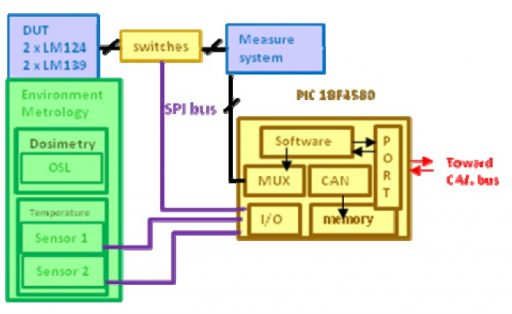
All six external panels of the Robusta satellite are covered in solar cells for a total of 12 triple-junction cells that generate an orbit-average power of 1 Watt – requiring careful rationing of power by managing which systems are powered. A Li-Ion battery stores power and delivers the 3.5V operating voltage for the satellite with the exception of the radio system which needs 7.5V power. Internal communications are handled via a CAN bus and a central microcontroller is in charge of all satellite functions. VHF/UHF is used for communications.
The objective of the Robusta payload is to expose bipolar components to ionizing radiation for an extended period of time to study the deterioration of the tension currents as a result of accumulated radiation dose in Low Earth Orbit. Data collected in the actual operational environment will be compared to ELDRS (Enhanced Low Dose Rate Sensitivity) testing currently performed on Earth.
The payload comprises a command and control segment with the microcontroller, switches and satellite interfaces; a metrology segment with temperature sensors and radiation dosimeters; and an experiment segment with four LM124 amplifiers and four LM1394 voltage comparators. The test subjects are placed in a slot in the satellite shielding to be in direct contact with the space environment.
skCUBE
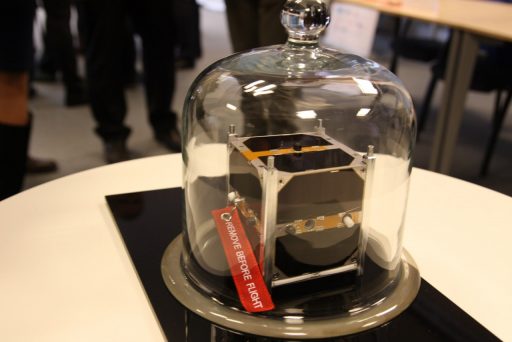
skCUBE is the first Slovak satellite and the result of a project of University of Zilina (UNIZA) in cooperation with the University of Technology (STU) in Bratislava and SOSA (Slovak Organization for Space Activities). The 1U CubeSat is outfitted with a camera and a Very Low Frequency experiment, though the overall objective of the project is to gain hands-on experience in the conduct of a space mission and strengthen Slovakia’s standing within the European Space Agency.
The 10 x 10 x 10-centimeter satellite uses a design developed from the ground up at UNIZA, featuring an aluminum skeleton that holds two solar cells on each external panel and hosts five printed circuit board on which all of the satellite’s systems are facilitated. The boards are interconnected with 104-pin connectors and a pair of dipole antennas deployed from the underside of the cube will carry up- and downlink communications. The solar cells deliver an orbit-average power of 2 Watts fed to two 1100mAh batteries.
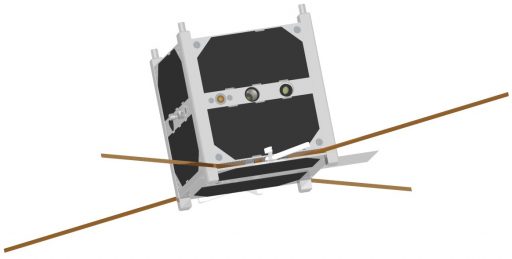
skCUBE’s MSP430-based main computer runs a new real-time operating system developed specifically for this mission. FRAM (Ferroelectric Random Access Memory) is used to improve the radiation resistance of the onboard computer system and an internal watchdog automatically re-sets the computer in case of a radiation-induced lock-up.
The satellite employs the AX.25 communications protocol for UHF telemetry downlink and telecommand uplink; a 2401MHz S-Band terminal feeding a patch antenna is employed for the downlink of imagery at a higher data rate of 240kbit/S.
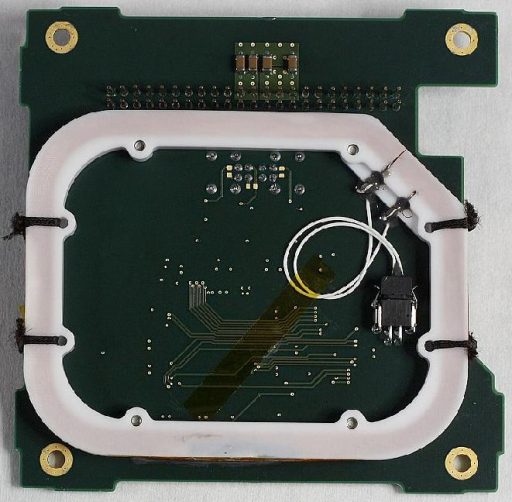
skCUBE is an actively stabilized 1U CubeSat, hosting MEMS magnetometers and gyroscopes plus sun and Earth sensors for attitude determination up to an accuracy of 0.1°. The Sun Sensor makes use of a Position Sensitive Detector and the Earth Sensor detects the temperature contrast between Earth’s horizon and cold space using an infrared sensor. Actuation is provided by magnetic torquers to keep the satellite in an Earth-pointed attitude for operation of the Earth observation camera.
The primary science experiment aboard skCUBE is a Very Low Frequency receiver for radio signals in the 3 to 30 kHz range. Its goal is to detect whistlers, study Earth’s ionosphere and terrestrial lightning. The instrument comprises a pair of square air-core loop/coils with 1000 windings over a 42cm² cross sectional area, acting as antennas for the VLF radio signals. The coil signal is amplified and converted from analog to digital followed by onboard processing that includes filtration of the signal, spectral analysis and event detection based on power flux density. The signals are sampled at a frequency of 200Hz.
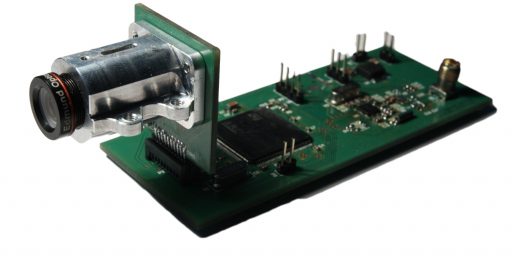
Natural sources of VLF radio waves in Low Earth Orbit will most prevalently come from lightning discharges in the atmosphere, charged particles in the magnetosphere and ionospheric interactions. Human-made signals from the ground can be of use as they can be utilized to measure charged particle densities in the ionosphere and properties of the magnetic field, both of which alter the waves’ original characteristics.
The skCUBE camera has the primary objective of collecting images of Earth, Slovakia in particular. The camera has a field of view of 60 degrees and has an infrared and neutral density filter. The focal plane hosts a 750 x 480 pixel detector and a built-in microcontroller completes post-processing and JPEG compression before sending the picture to a Flash memory.
Suchai
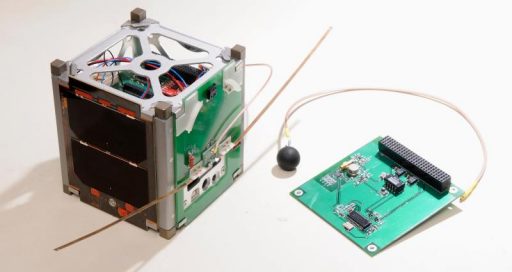
Suchai, the Satellite of the University of Chile for Aerospace Investigation, is the first Chilean CubeSat developed by students and faculty from several departments of Universidad de Chile with the primary goal of providing hands-on experience of designing, building, launching and operating a satellite mission.
Complying with the 1U CubeSat form factor, the satellite features typical CubeSat systems like body-mounted solar cells, a simple stabilization system and communications in the VHF/UHF bands.
Suchai hosts four payloads: A Langmuir Probe Sensor is dedicated to probe the ionosphere in synchronization with incoherent scatter radar (ISR) by taking simultaneous measurements of electron density variations. A simple RC experiment will examine the out of equilibrium fluctuations in a hostile environment. Suchai hosts a small digital camera to capture imagery of Earth and a GPS receiver will provide positioning information as well as occultation measurements of Earth’s atmosphere, yielding Total Electron Content and water vapor measurements.
